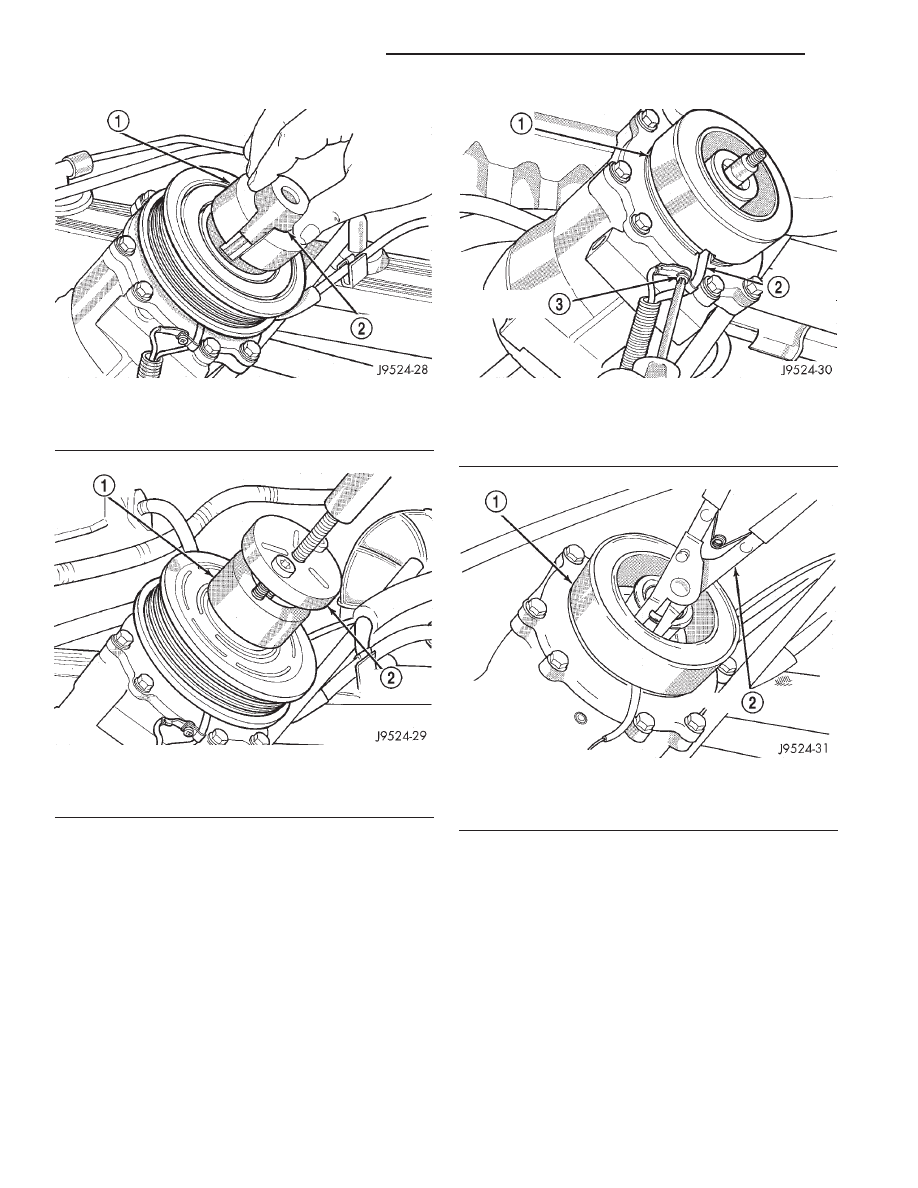Jeep XJ. Manual - part 514

felt from the front cover. If the felt is saturated with
oil, the shaft seal is leaking and the compressor must
be replaced.
Check the clutch pulley bearing for roughness or
excessive leakage of grease. Replace the bearing, if
required.
INSTALLATION
(1) Install the clutch field coil and snap ring.
(2) Install the clutch coil lead wire harness retain-
ing clip on the compressor front housing and tighten
the retaining screw.
(3) Align the rotor assembly squarely on the front
compressor housing hub.
(4) Install the pulley bearing assembly with the
installer (Special Tool C-6871) (Fig. 27). Thread the
installer on the shaft, then turn the nut until the
pulley assembly is seated.
(5) Install the external front snap ring with snap
ring pliers. The bevel side of the snap ring must be
facing outward. Press the snap ring to make sure it
is properly seated in the groove.
CAUTION: If the snap ring is not fully seated in the
groove it will vibrate out, resulting in a clutch fail-
ure and severe damage to the front housing of the
compressor.
(6) Install the compressor shaft key and the origi-
nal clutch shims on the compressor shaft.
Fig. 23 Shaft Protector and Puller
1 – PULLER JAW
2 – SHAFT PROTECTOR
Fig. 24 Install Puller Plate
1 – PULLER JAW
2 – PULLER
Fig. 25 Clutch Coil Lead Wire Harness
1 – COIL
2 – COIL WIRE
3 – RETAINER SCREW
Fig. 26 Clutch Field Coil Snap Ring Remove
1 – COIL
2 – SNAP RING PLIERS
24 - 30
HEATING AND AIR CONDITIONING
XJ
REMOVAL AND INSTALLATION (Continued)